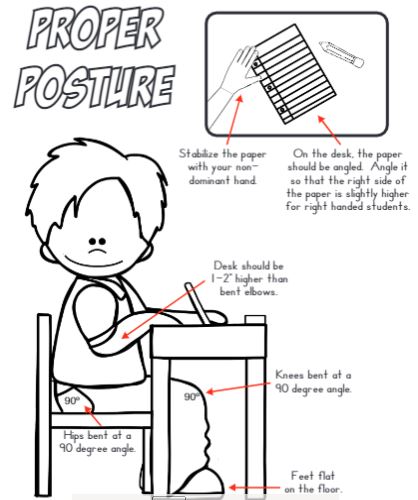- Home
- Our School
- Archived Content
- Old Home Learning
- Home Learning Week 9
- Additional Support
- Physical and Sensory Support
Physical and Sensory Support
If your child needs support for their handwriting...
First, model and explain good posture to your child.
Recommended sitting posture:
-
Hips, knees and ankles at 90 degrees
-
Lower back to touch the backrest of the chair
-
Chair fully pulled in under desk
-
Feet supported or flat on the floor
-
Forearms are supported on the table
Then try some of these exercises and tips...
Fine motor skills can include small movements such as:
- holding a pencil
- scissor skills etc.
Watch the videos to see how you can develop these skills at home.
Practice your typing skills...
Click here to access Dance Mat Typing, a fun way to learn touch typing.
There are four levels to play, each divided into three stages.
You start by learning the home row keys. Each stage builds on previous lessons, introducing new letters as you progress. You’ll soon be touch typing like an expert! At the end of each level you can test your typing speed and get a fun reward.
When you can do it well, touch typing is the fastest way to write. Many people quickly learn to touch type faster than they can write with a pen. The important things to remember are:
■ Use the correct fingers
■ There's no need to rush!
■ Always rest your wrists on the desk.
You should take a rest, and shake your hands and arms to relax your muscles if you get tired.
Sensory Circuits
Some of our children usually attend sensory circuits, the purpose of this is to help to set children up for a school day.
It enables children to reach the level of alertness needed to concentrate during lessons.
Children participate in a 10-15 minute session of activities designed to improve brain processing efficiency, and they generally find that the circuit is a fun way to start the day.
At school we have specialist equipment but in the video and links below there are some suggestions of ways to recreate this at home without the resources.
Activities for attention and focus
Sensory Circuits

